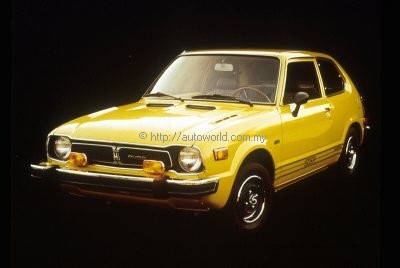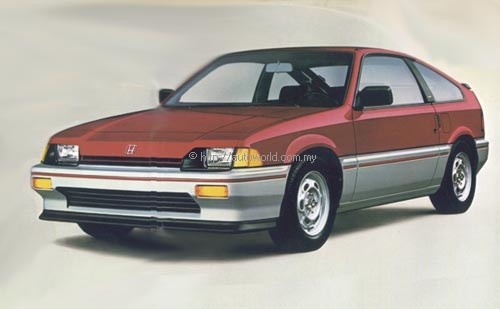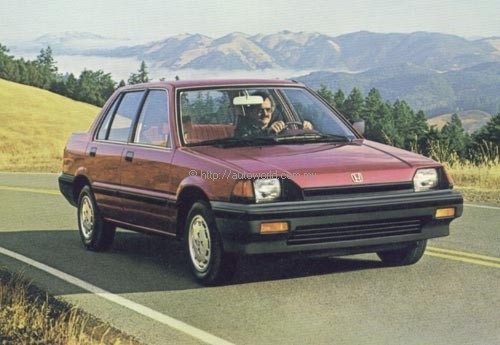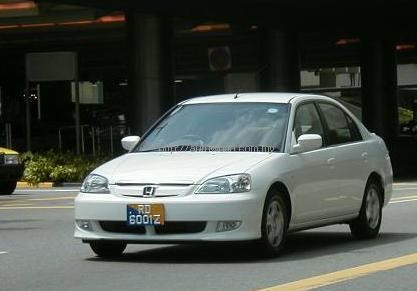Honda Civic Passes 15 Million Mark
The Honda Civic RX for the Malaysian market comes at an appropriate time in the history of the model as it crossed the 15-million mark last month. While many Malaysians may consider the Civic as the first 4-wheeled Honda offered, there were actually some earlier models such as the Life and S800 (both with air-cooled engines) which were also sold in the 1960s.
However, it was the Civic which brought the Honda car into the consciousness of motorists around the world. This model arrived at a time when motorists in many countries, especially the US, were concerned about the energy crisis which made more economical cars popular.
At the same time, new and tougher regulations in the US concerning exhaust emissions also came into force and the Civic had its legendary CVCC engine which was designed to meet those regulations without requiring a catalytic converter, a major difference from other manufacturers which hurriedly attached pollution control devices that affected engine performance.
 |
The first Civics rolled out of Honda’s Suzuka factory in June 1972 and exports began the following year to many countries. Honda’s strong reputation as a motorcycle manufacturer certainly helped in getting the Civic accepted but it also impressed with its own superior features.
It was small but surprising spacious and the first 1.2-litre 4-cylinder water-cooled engine put out around 37 kW/50 bhp. Apparently Mr Honda had been against making the engine water-cooled as he believed in the merits of air-cooled engines but his engineers must have won the argument in the end. The CVCC (for Compound Vortex Combustion Chamber) engine amazed people in the US because of its peppy performance and the fact that it did not need a power-robbing catalytic converter to meet the tough new regulations. It was also economical to run, returning around 17 kms/litre (48 mpg), partly due to its light weight of around 682 kgs. The first generation had 4-speed manual transmission and a 2-speed ‘Hondamatic’ automatic transmission.
Like many Japanese cars of the 1970s, the Civic changed people’s perception of Japanese models; though basic by today’s standards, the little Honda represented good value for money, was utterly reliable and cheap to run.
In the years that followed, the Civic grew a bit in size – from an overall length of 3551 mm to 4435 mm today – and engines got larger (a 2.0-litre engine is available in some markets). Variants were also created off the same platform, eg the CRX coupe, Shuttle (which had the original Real-Time 4WD system found in today’s CR-V), open-topped del Sol and in the 1990s, a 2-door coupe for the US market. While these variants were intended for specific segments, it was the 3-box sedan introduced in the early 1980s which would surpass the original hatchback in sales.
An interesting period in the history of the Civic concerns its adaptation by British Leyland when Honda had a joint-venture with the British carmaker in the early 1980s. The design of the domestic Ballade version was converted into the Triumph Acclaim which gave a much-needed boost to BL’s product line. It was the first Japanese model to be built in Britain, albeit having a different brand name.
Technically, the Civic was often a notch above rivals, particularly in chassis design (although dropping the double wishbone suspension for the latest generation disappointed Civic loyalists). And though Alfa Romeo had been the first to offer variable valve timing, it was the VTEC engine in the Civic of the late 1980s which popularised the mechanism among enthusiasts. Various VTEC mechanisms were available and the most sophisticated ones extracted a lot of power from the engine to create really quick machines.
In more recent years, the Civic has remained at the forefront of automotive technology with the inclusion of a hybrid-engined model in December 2001. Powered by a further development of the powerplant in the Insight, the Civic Hybrid represents a viable solution for preserving energy resources and reducing air pollution.
In Malaysia, the Civic has been assembled since the early 1980s. Initially, only the hatchback was assembled, followed by the sedan. The Civic line-up always had two bodystyles till the current 7th generation, the omission of the hatchback likely due to declining demand evident over the years. While there are many enthusiasts who love the hatchback, their numbers have been small and, from the business point of view, insufficient to justify the cost of assembling locally.
The Civic is currently sold in some 160 countries and has been Honda’s best-selling vehicle on a global basis for more than 20 years. The first Civics assembled outside Japan were in Indonesia (from 1975) and last year, Honda produced approximately 600,000 Civics in 11 countries around the world.





























